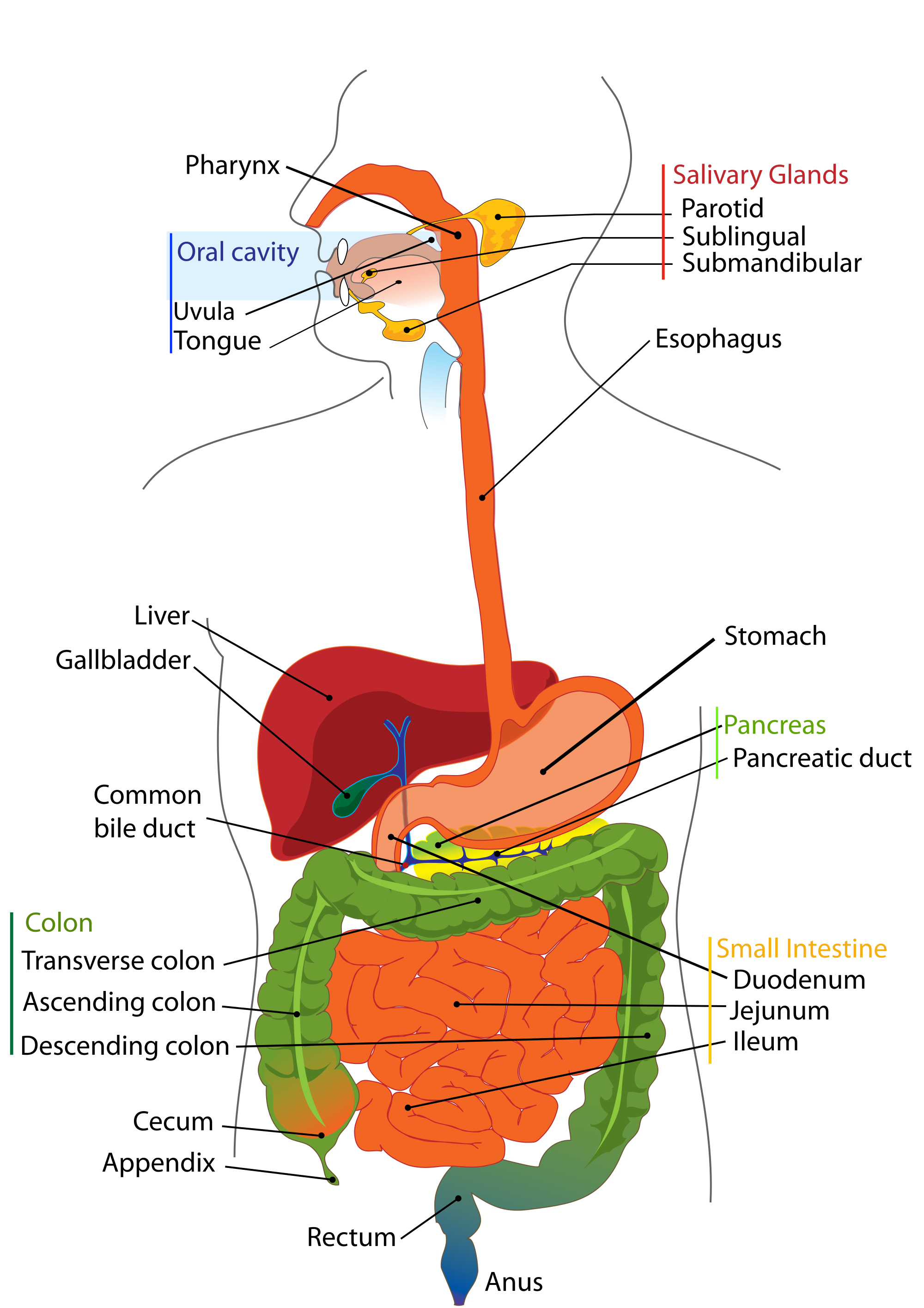Your digestive system consists of the digestive tract – also called the gastrointestinal (GI) tract – and the liver, gallbladder and pancreas. The digestive tract is basically a series of hollow organs jointed in a twisting tube from the mouth all the way down to the anus. The mouth, stomach, esophagus, small and large intestines, anus and rectum are the hollow organs the GI tract is made up of. The solid organs of the digestive system are the liver, gallbladder and pancreas. Your digestive system activates whenever you eat something and helps the body digest food and absorb nutrients from it. But do you know the order of digestive system and their functions?
What Is the Order of Digestive System?
You may know about some of the solid and hollow organs included in the digestive system, but not many have complete information about them. Now let's get a closer look:
 1st Stop – The Mouth
1st Stop – The Mouth
When you start chewing something, your salivary glands start producing saliva to lubricate your food. Your break down your food and your tongue mixes it up with saliva. There are three pairs of salivary glands in your mouth – the sublingual, parotid and submandibular glands. These glands produce up to a liter of saliva every day.
2nd Stop – The Esophagus
Your tongue, teeth and saliva will turn your food into a soft, round mass that will make it easy to swallow. There are muscles in your throat and mouth used to push food to your esophagus, which is the tube connecting your stomach with your throat. The esophagus also has muscles that create synchronized waves to propel your food into your stomach. It works in a systematic way – the muscles behind the round mass of food you have in the esophagus will contract to push it forward and the muscles ahead of it will relax to make it easy for your food to travel to your stomach. When your food reaches the lower end of the esophagus, a muscular valve, called the lower esophageal sphincter, feels the pressure from the food and opens up to let what you eat enter your stomach.
3rd Stop – The Stomach
You have powerful muscles in your stomach that help to break down your food into smaller pieces. The digestive glands in your stomach will also produce enzymes and stomach acid. The combination of stomach acid and enzymes turn the food into a paste called chyme. Your stomach muscles will then contract to push the chyme towards your small intestine. The food will enter the small intestine through a valve called the pylorus. The pylorus releases a small amount of food at a time.
4th Stop – Small Intestine
Small intestine comes next in the order of digestive system. The digestion will continue even when your food has entered your duodenum, the first section of your small intestine. A variety of digestive juices released by liver, pancreas and gallbladder will enter your small intestine for complete digestion of food. Pancreas produces enzymes to break down carbohydrates, proteins and fats, whereas the liver produces bile to digest fats. The wall of your small intestine also secretes other juices for digestion. The food will then move into the second section of your small intestine where it will turn into smaller molecules of nutrients. After that, it moves into the final portion of your small intestine where the remaining nutrients are absorbed.
5th Stop – The Large Intestine
After the absorption of nutrients in the final section of your small intestine, there remains a combination of water, electrolytes and waste products, such as dead cells and plant fiber. This waste enters your large intestine (colon), which is a 5-7 feet long muscular tube connecting your small intestine to the rectum. The waste moves through your colon by means of peristalsis. It enters your large intestine in a liquid state but then converts into solid form because the water is absorbed in the colon. Stool goes in the S-shaped colon and enters into the rectum once or twice a day. The rectum is an 8-inch chamber connecting your colon to your anus. It receives stool form the colon and holds it until evacuation happens.
That's everything about the order of digestive system, but if you still have questions or want to know more about organs in the digestive system, watch the following video:
